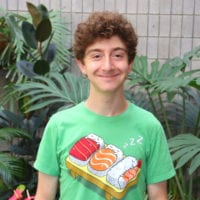
Exogenous Hormone Application Modulates Cardiac Glycosides in the Non-Model Brassica Wormseed Wallflower
Cardiac glycosides, also called cardenolides, are defensive compounds produced in twelve different plant families that act as a broad-spectrum herbivore defense. In binding to and inactivating Na+, K+-ATPase, a crucial and highly conserved ion channel in animal cell membranes, cardiac glycosides provide a durable and effective deterrent to feeding. Specifically, cardiac glycosides hamper muscle function, eventually slowing and stopping the heart. The cardiac glycoside chemical structure contains a steroid moiety, a lactone ring, and sugars. The structural similarity to steroid hormones leads us to hypothesize that biosynthesis of cardiac glycosides in plants might closely mirror that of other phytosteroids and that the two pathways may share intermediates. My project focused on modulating hormone levels in plants through exogenous applications and artificial growth media to see whether there were subsequent effects on cardenolide content. I performed two hormone application experiments, one involving growth of Erysimum cheiranthoides (wormseed wallflower) seedlings on agar growth medium supplemented with the plant hormones auxin and brassinolide, and the other direct leaf application of these two hormones. I then ran UPLC-MS analyses of metabolite extracts in order to compare cardiac glycoside content between my control and hormone groups. I found that seedlings growing on plates supplemented with brassinolide had increased cardiac glycoside levels, but that the treatment either had no effect, or decreased cardiac glycosides in adult leaves. I found that indole acetic acid (auxin) had no effect on cardiac glycosides in either experiment, and that 1-naphthaleneacetic acid, a synthetic auxin analog, also had no effect when present in seedling growth medium. In future experiments, I would like to perform a transient overexpression of genes early in the brassinosteroid pathway to determine whether this would also increase cardiac glycosides, implying that these two phytosterols share pathway intermediates. I also would like to grow plants on medium supplemented with brassinosteroid analogs to see if cardiac glycosides similarly increase, thereby determining whether the increase is due to the direct effects of the hormone on the plant or due to a shunting of pathway intermediates to cardiac glycosides, which might result from a surplus of brassinosteroid hormones.
My Experience:
Having worked in the Jander lab a previous summer, I was expecting an experience like what I already knew, of carrying out experiments and letting my mentor decide what I would do for his and my projects. That was in high school for me, and having finished my first year in college, I found that I could apply my basic coursework to my research and get a lot more out of it. Compared to my previous experience, I’m much more in the driver’s seat and am making my own decisions about my project. My mentor taught me many new techniques and now lets me be relatively independent. I’ve been having lots of trouble with one of my experiments, yet all my effort researching troubleshooting for that technique, asking other lab members, and trial and error has given me a deeper understanding about the technique and how it works. I’m a Cornell student, and my experiences this summer encouraged me to see this project through to the finish; I’ll continue to do research in the Jander Lab during the school year. I’d just like to thank my mentor Cynthia, Dr. Jander, and all the other Jander Lab members for encouraging me and for making such a positive learning experience!
